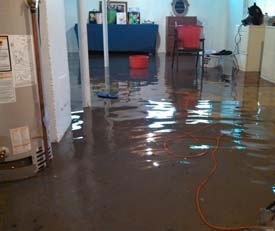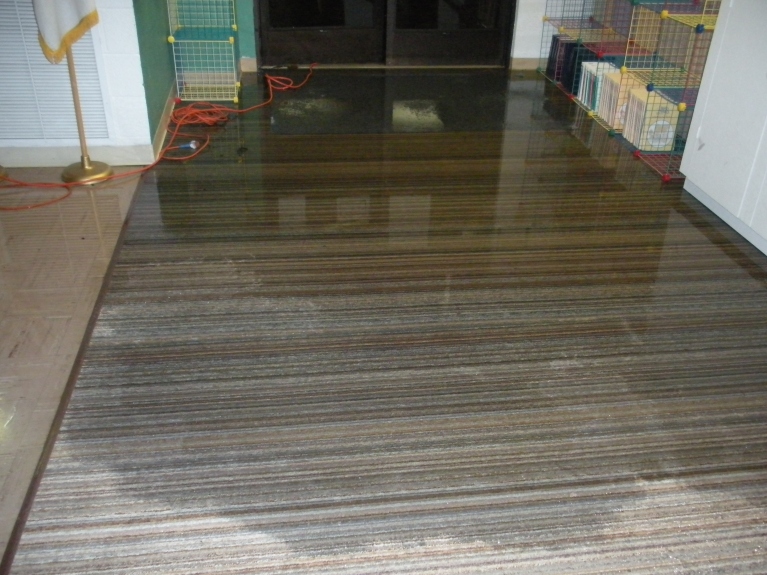Required Guidelines for Homeowners Handling Broken Heating Units
Required Guidelines for Homeowners Handling Broken Heating Units
Blog Article
Just about everyone is bound to have their private thinking when it comes to How to Avoid a Broken Hot Water Heater.

Whether it lies in the basement or a separate area, damaged hot water heater can cause anxiety. A conventional unit holds 80 gallons, so an overnight leak will result in a flood. This causes significant home damages with soaked wall surfaces and floors. Besides, having no hot water supply is likewise bothersome. If you are managing these problems, bear in mind of the following:
Shut Down Power Source
Prior to calling the plumber, closed off a gas water heating unit by transforming the temperature dial. This will prevent electrocution, especially if there is a leakage as water is a conductor. Commonly, the home heating aspect closes off when the water strikes a specific temperature level.
Cut Off the Cold Water Supply
Cut off the tanks tap water supply from the resource. This goes from your major water line into the storage tank. When your container is in good condition, the cold water stops filling up when the storage tank is full. Since it is dripping, the water will certainly continue to flow. Shut the shutoff found at the top of the heater. Turn this clockwise to shut it off. You must transform off that major water supply line outside your building if you can not locate it or reach it.
Call the Plumber
After doing the very first 2 safety actions, you should call your plumber to find right now to deal with a ruptured hot water heater. Bear in mind that your device will not simply conk out dramatically overnight. There are typically indications that your aging water heater has debris build-up in the inside. Take note of the following:
Do not wait for significant flooding to call the plumber. Already, you will certainly need to invest even more to restore your home. Rather, as soon as you spot these indicators, have an expert come to examine your water heater say thanks to. Usually, water heaters have a life-span of concerning 8 to 12 years. With regular examination as well as upkeep, you can lengthen its life.
Clean Up Building
After calling the plumber, document damage by taking notes as well as photos so you can declare your property owner's insurance coverage. Remove any standing water to stop mold and mildew and mildew growth. If you have a submersible water pump, utilize that to drain pipes the water.
Remember, if you observe any type of problems with your water heating unit, call the pros right away. You can not take this issue lightly due to the fact that a defective thermostat can raise water temperature to a dangerously high level, leading to unexpected burns.
Whether it is located in the basement or a separate area, broken water heating systems can trigger stress and anxiety. Prior to calling the plumber, closed off a gas water heater by turning the temperature level dial. After doing the first two safety and security actions, you need to call your plumber to come right away to take care of a fractured water heating unit. If you have a submersible water pump, utilize that to drain the water. Bear in mind, if you discover any issues with your water heating unit, call the pros right away.
8 REASONS YOUR HOT WATER HEATER IS NOT WORKING & HOW TO FIX
Water Heater Problems & Solutions
Loose or Damaged In-Line Valve
Unlike a water leak near the bottom of your water tank, a water leak on top of your system can be easily fixed. A common cause of water tank leaks includes a loose in-line valve. This is a handle that is located at the top of the water tank that is engineered to activate or deactivate the flow of water. To fix this problem, you will need to secure the nut that holds the ball or in-line valve in its location. If the leak becomes more severe once it is tightened, you will be required to travel to your local hardware store to purchase a new in-line valve for your water heater.
Damaged Pressure Relief Valve
Most types of water heaters are equipped with a pressure relief valve that is engineered to discharge pressure from the water tank when it becomes too high. If this valve on top of your water heater begins to leak, we recommend purchasing a new one online or from your local store. The process of removing and replacing pressure relief valves is not complicated.
No Warm Water
If you have an electric water heater in your home, the most typical cause of a lack of warm water is a broken heating element. Your water heater is equipped with two heating elements that are tasked with heating incoming water in the water tank. Once a heating element begins to malfunction, you will have little to no hot water to use for showering, cleaning, and laundry.
Low Supply of Hot Water
Are you continuously running out of warm water? This issue may be a byproduct of a cracked dip tube. This tube is engineered to push cold water to the base of your water tank to be heated. Once a crack or hole begins to form in the dip tube, the incoming supply of cold water may be released near the top or middle of your tank. As a result, the cold water on top of the tank will be sent to the faucets and showers in your house. This hot water heater problem can only be fixed by replacing the dip tube on your system. Since the process of installing a new dip tube is complex, we recommend calling a certified technician for help.
A low supply of warm water may also be a signal of excess sediment buildup in your water tank. As your water heater reaches the middle of its life cycle, minerals in water including magnesium and calcium will begin to collect at the base of the water tank. As the minerals continue to grow, there will be less room in the water tank to store hot water. To resolve this problem, flush your water heater to remove the excess minerals.
Water is Too Warm or Cold
If the water in your shower feels uncomfortable hot or cold, you can adjust the temperature of your water by changing the settings on your thermostat. Setting the temperature to 120 degrees Fahrenheit may help you save money on your utility bills. This is an excellent temperature to use if you’re worried about scalding or skin irritation. Does this temperature feel too cold? You may also adjust the thermostat to 140 degrees Fahrenheit to make your showers more pleasant. If your hot water heater is not working when you change the temperature, this is an indicator of a broken thermostat. Immediately find a certified plumbing or heating contractor in your area to repair or replace your thermostat.
Low Water Pressure
Low water pressure is not always caused by a malfunctioning water heater. If you live in an older home with smaller water pipes, the flow of water will be restricted prior to reaching our kitchen or bathroom skins. The only way to eliminate this hot water heater problem is to connect new ¾-inch water lines to your system. Another type of problem that may negatively impact your water pressure includes calcium deposits in water pipes.
As magnesium and calcium begin to form in your pipes, the diameter of your water lines will become smaller. As a result, the warm water from your water heater will not be able to travel in an efficient manner to your sinks or appliances. Since the process of replacing water pipes includes removing drywall, an average homeowner that does not have a plumbing license will not be able to fix this hot water heater problem.
https://www.wmhendersoninc.com/blog/8-reasons-your-water-heater-is-not-working-how-to-fix/

I was introduced to that article on Water Heater Repair from a friend on a different web address. In case you liked our blog posting please be sure to pass it around. I praise you for your time. Visit again soon.
Reliable help? Dial. Report this page